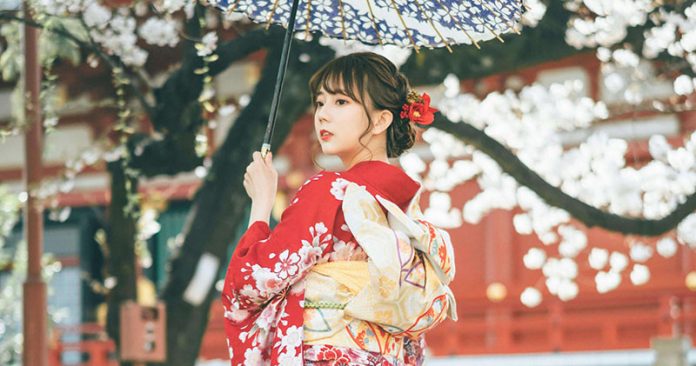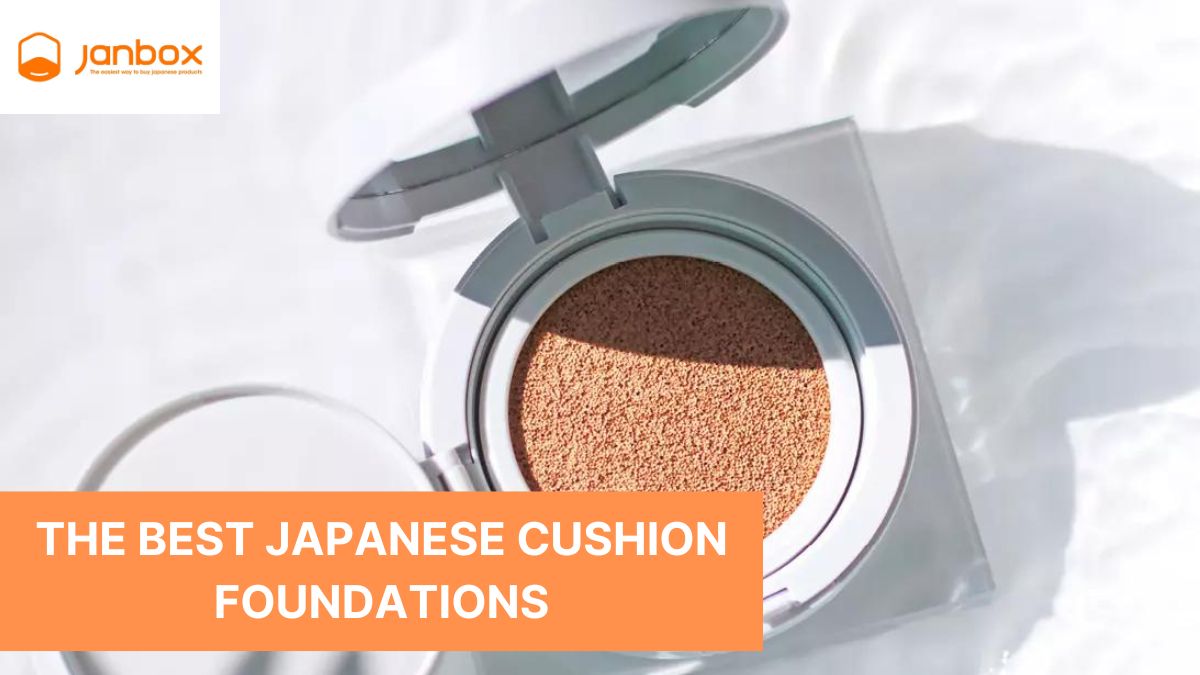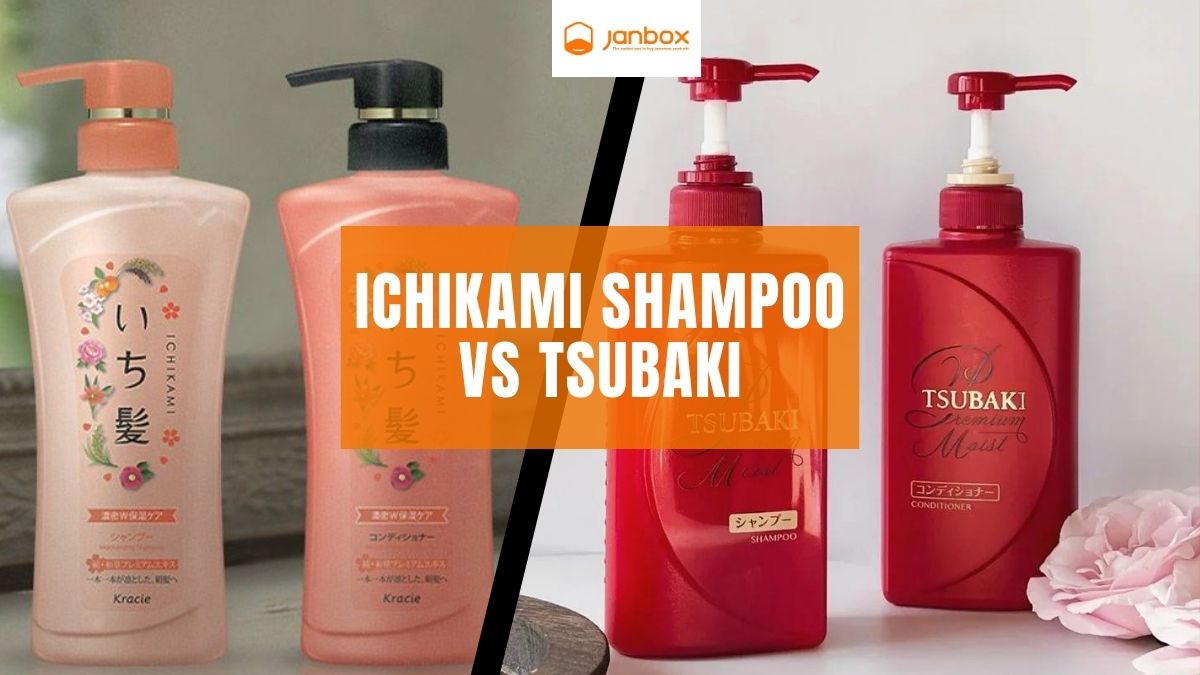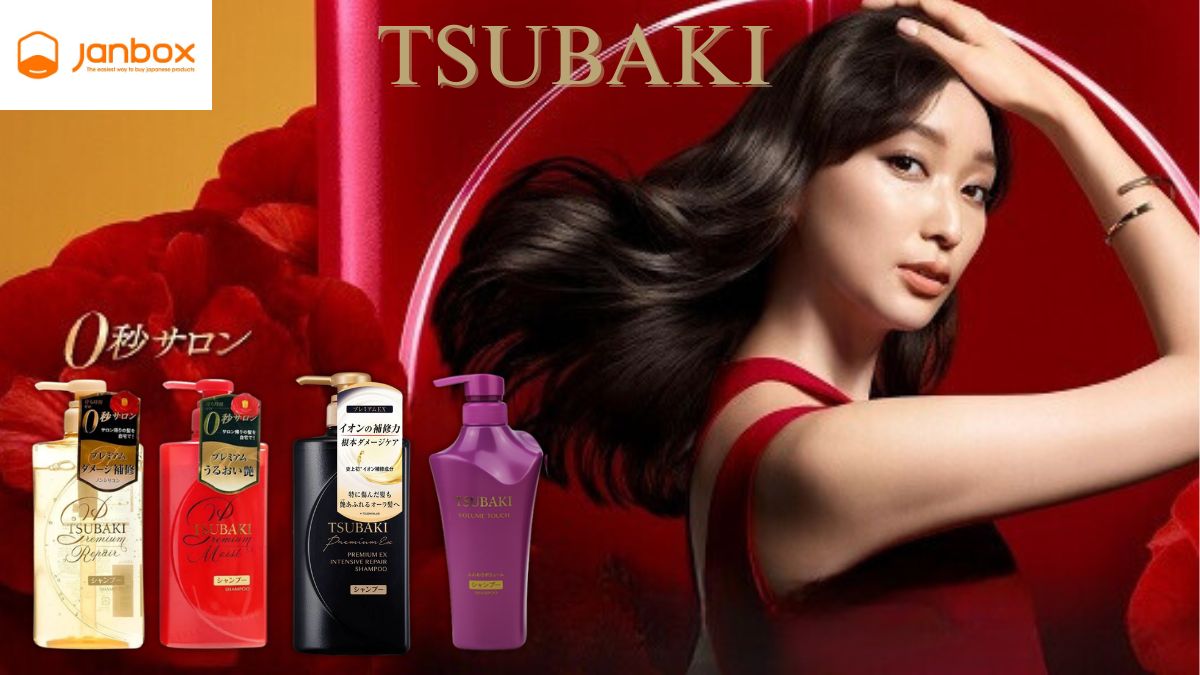Despite the conviction, Japanese kimono types count on numerous variations, classified by gender, types of events, and even marital status. In this article, Janbox shall describe some of the most Japanese kimono types, including everything you need to know about Kimono.
I. History Of Japanese Kimono
So, what is a Japanese kimono? The word “kimono”, which when separated was “ki” is “to wear” and “mono” means “thing”, so basically at first, it is just “thing to wear” or other words, “cloth”. Another name for the Kimono is Wafuku, which also means “Japanese cloth”.
1.1. Heian Period (794-1192)
Clothes that mostly resembled the Japanese kimono types nowadays first arose during the Heian Period (794-1192), which wasn’t expected to be a remarkable footmark in Japanese culture and history. In the later years, Japan stopped sending envoys to China and stopped exporting garments to the Imperial Palace due to national conflicts.
While Tang dynasty envoys’ impacts remained, a disconnect allowed Japan to produce more stylized clothes, adopting modest influences and establishing their designs to symbolize a different and autonomous cultural identity. The “kosode”, meaning short-sleeved, was among the most popular. This undergarment immediately became a men’s and women’s fashion.
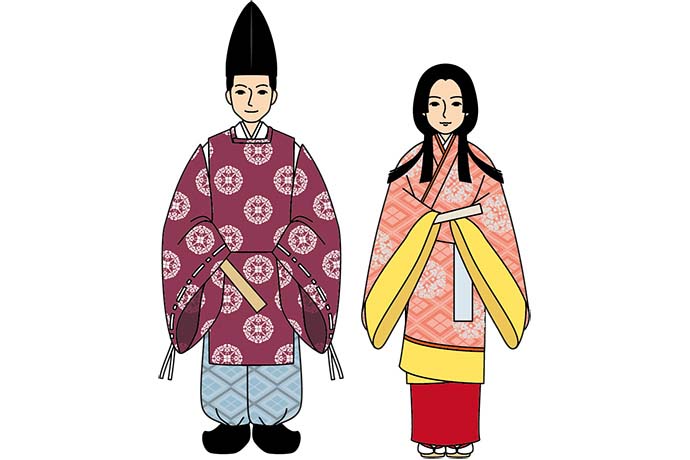
Typical “kosode” in the Heian period
1.2. The Edo Period (1603-1867)
The kosode, the kimono’s predecessor, became widely popular and became a global trend throughout this time. Japan’s culture and economy exploded simultaneously. Art was popular, but because Japan was a stratified society, the social order was visibly tight.
According to the “Journal of Japanese studies”, the style, motif, fabric, technique, and color of the kosode at that time, all revealed your identity. This established an inextricable link between kosode and art and design. After being worn by the higher classes, it was popular with everyone, both poor and rich classes, which is contrary to popular belief that the kimono was an upper luxurious clothing.
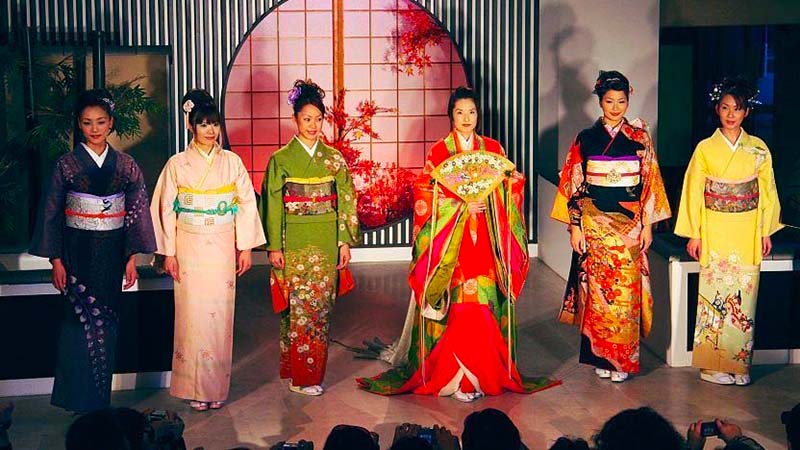
Style, motif, fabric, technique, and color of the kosode at that time, all revealed your identity
1.3. Menji Period (1868-1912)
Foreign influences affected Japan’s connection with the kimono during the Menji Period (1868-1912). All government officials and military personnel were forced to wear the Western dress at the time.
During this period, they coined the moniker ‘kimono’ for traditional Japanese clothing that symbolizes Japan’s insular cultural development and rich artistic canon. This move kept traditional features of Japanese culture while incorporating Western ideas.
The kimono is no longer a daily garment, but its preservation honors its historical and cultural significance in Japan. When it comes to Japan’s core values and traditions, the kimono is still a powerful symbol.
>>> Read more: What is a Hakama? Everything You Need To Know (2022)
II. Japanese Kimono Types
There are numerous types of Kimono available today, but five main types are frequently mentioned, including:
2.1. Tomesode (留袖), or Kuro Tomesode
Among other kimono types, it’s one of the most stunning. The tomesode was originally worn by any woman above the age of 18, but it gradually became a symbol of marriage for married women only. Shorter sleeves were more practical for doing housework, and married ladies didn’t require long kimono sleeves to express their feelings to a lover.
For married women, “tomesode” (short-sleeved kimono) is a formal kimono with an elegant continuous pattern called “eba moyo” sewn diagonally along the hem. Kurotomesode (black tomesode) and “irotomesode” (white tomesode) are the two varieties of tomesodes in use today (colored tomesode).
2.2. Furisode (振袖)
The most formal kimono style in Japan is known as “furisode,” and is often worn by young, single women. Furisodes can be identified by their long, loose sleeves, which can be anywhere from 80 cm to 114 cm in length. At wedding celebrations, “ofurisode” (big furisodes), which have sleeves that measure approximately 112 inches long, are typically worn by brides as an alternative to iro uchikake. Medium furisode (chufurisode) has a sleeve length of roughly 100 cm.
When worn with “hakama,” this kimono can also be worn by unmarried guests during weddings, formal parties, and other forms of ceremonies such as graduations, as it is the kimono worn by Japanese ladies for their coming-of-age ceremony (pant-like garment worn over a kimono).
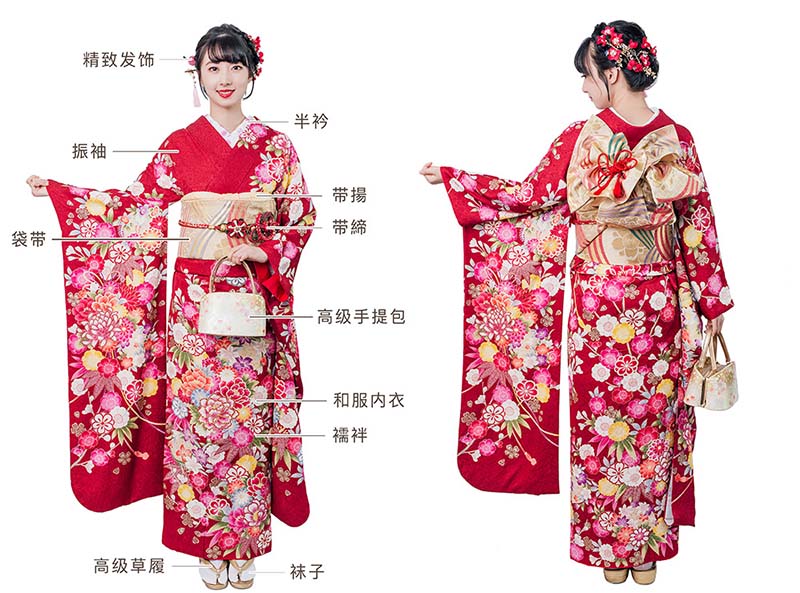
Furisode is one of the most popular Japanese kimono types
2.3. Houmongi (訪問着)
To provide the illusion of a single painting, “homongi” kimonos are semi-formal garments with no or just one crest and an eba moyo pattern placed along the hem and on the shoulder, chest, and sleeve. Homongi is available in a wide range of patterns and colors, ranging from traditional to modern.
A wide range of events, from casual to formal: theater performances, tea parties, and ceremonies, class reunions and shrine visits, children’s entrance or graduation ceremonies, and other types of parties like dinner or New Year’s parties,… can all be accommodated by Homongi: Homongi is suitable for both married and unmarried women and a wide range of situations, from casual to more formal.
Guests at a wedding might see their friends and acquaintances sporting it. However, remember to consider the types of events and the seasons while selecting the homongi’s color and pattern. If you’re planning a wedding, kimonos with brilliant, opulent hues and auspicious patterns are recommended. When it comes to occasions like children’s entry or graduation ceremonies and shichigosan, kimonos in light, elegant colors with clean, modest patterns are recommended because the focus should be on the youngsters.
2.4.Yukata (浴衣)
The word “yukata” literally translates as “bath garments,” but they are no longer just for the bathroom. Short-sleeved, unlined, and commonly made of cotton, linen, or hemp for summer use, it has become the most casual unlined traditional clothing. This cotton kimono is ideal for the summer because it is lightweight and doesn’t require any undergarments. Wearing yukata is appropriate for ladies of all ages, whether they’re staying at a ryokan, attending a Japanese festival, or simply wandering the streets in the summertime.
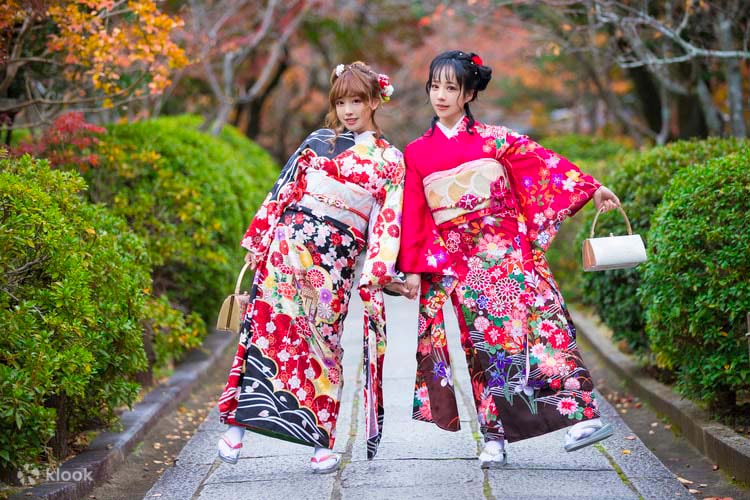
Yukata can often be seen at festivals and on hot days
A bathrobe used by the nobility during the Edo period, the Yukata evolved into its current form from a single-layered silk kimono. Priests began bathing in water for purification around the year 1800. The nobility and samurai classes soon followed suit, although cotton and linen-like materials soon replaced silk as the preferred fabric for outdoor activities.
At long last, the practice extended to the lower and middle classes, and public bathhouses began to appear in the capital city of Japan. While walking to and from their bathhouses, people began requesting nicer yukatas, which led to the contemporary yukata.
>>> Read more: What is the difference between a Yukata and a Kimono?
2.5. Men’s Kimono Types
Men’s kimono styles are also offered. Kimonos are worn by men every day in Japan. Men’s kimono patterns, on the other hand, are less fashionable these days. Colors are more subdued in men’s kimonos. Most formal men’s Japanese kimono types are made up of hakama (kimono pants) and Haori (long kimono jacket) (kimono jacket). Kinagashi, the most common men’s kimono style, is worn with an overhead belt knotted around the waist.
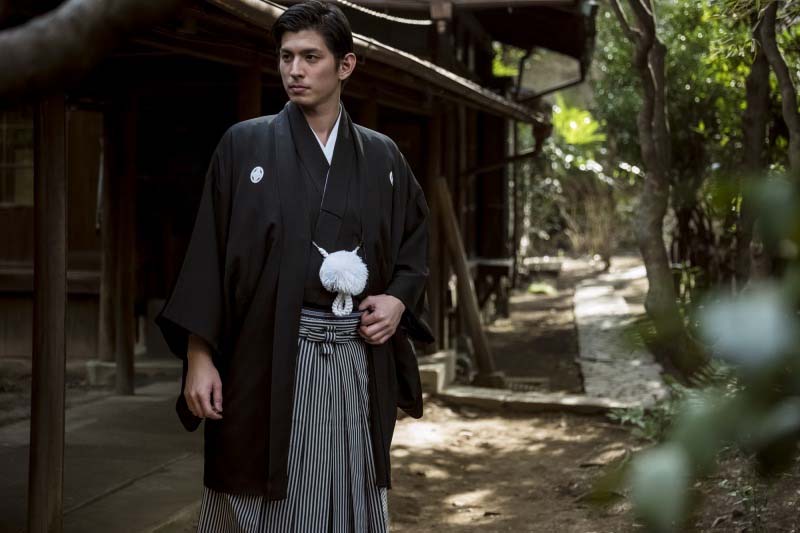
Colors are more subdued in men’s kimonos
III. Parts of A Traditional Japanese Kimono
Most people think a kimono is a single piece of fabric or a robe. Contrary to that, Kimono, however, commonly refers to the full costume, which has many components. We list out all of the parts of the kimonos below in the picture. Here, we look into some of the noticeable parts:
– Nagajuban (長襦袢): What we term a “nagajuban” in the kimono world is more of an “undershirt” or “slip”. These garments, which are shaped like a kimono, are used to preserve the pricey and difficult-to-clean kimonos. This means that an inner garment must be worn to keep the kimono clean by preventing sweat from seeping into the fabric.
– Obi (帯): The “belt” that keeps the kimono’s primary cloth in place comes next. It is a stunning, very noticeable outer sash. The obi helps women maintain a slim waist and upright posture by concealing superfluous cloth (similar to a corset).
– Tabi (足袋): white split-toe socks. There are colored and patterned tabi, but most ceremonies demand white ones.
– Zouri (草履): thonged straw sandals. Fabric, brocade, rubber, and vinyl are also used. Brocade-covered zori is the most formal for women, followed by vinyl and straw. Men can wear straw zori for all informal situations. The other type is Geta (下駄): wooden sandals between clogs and flip-flops. Geta, which are elevated with wooden supports (or teeth), are worn with summer kimonos more often than zori.
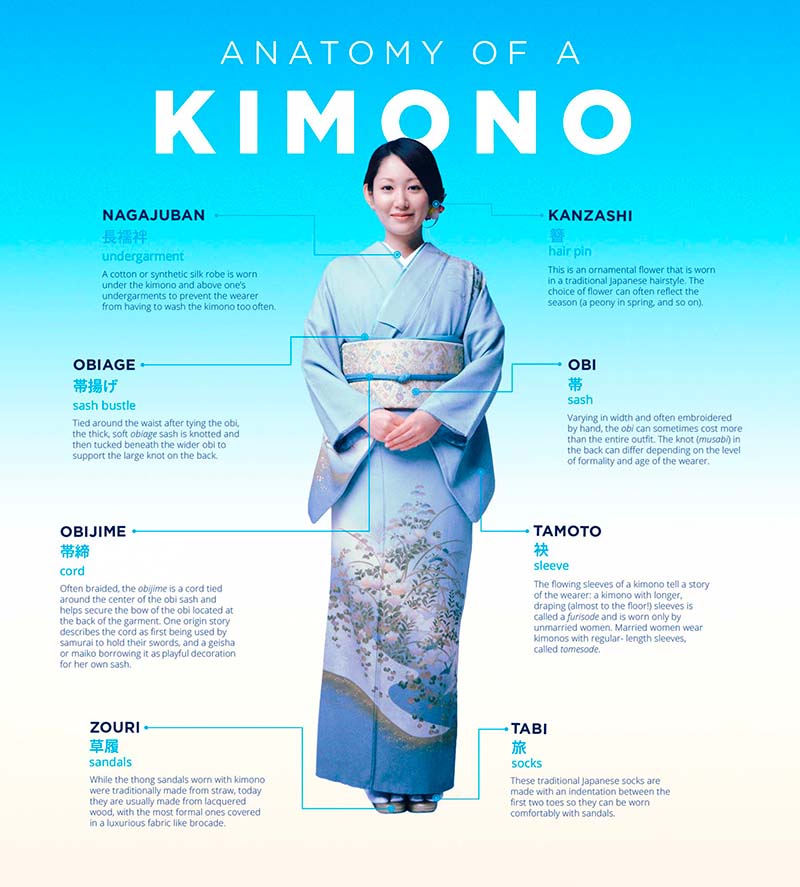
Parts of a kimono
>>Read more: [Update] Top 12 Famous Japanese Online Clothing Stores.
IV. How Much Does A Japanese Kimono Cost?
The price of an authentic Japanese kimono can range from $40 to $800 or more, depending on the fabric, pattern, and designs. A silk kimono created by one of Japan’s Living National Treasures is considered a work of art by the country’s government, is one of the most expensive Japanese kimono types, which can cost over $10,000, and it’s not uncommon for someone to pay that much for a silk kimono.
Typically, a wool kimono costs roughly $240, although the price might vary based on the skill of the kimono maker and the pattern of the fabric itself. Silk kimonos range in price from about $245 for a casual one to over $800 for a sophisticated silk kimono.
The most popular Japanese kimono type is the Yukata kimonos, which are primarily cotton, and are among the simplest and cheapest kimonos.
In the summer, it’s common to see people wear Yukata. It costs $20 to $40 for each, which may be worn and washed numerous times before showing any indications of wear and tear.
Traditional kimonos can be worn casually or formally, depending on the occasion. Kimonos made of silk tend to be reserved for formal events due to their beauty and price. Silk kimonos range in price from $245 to $800, depending on the quality and pattern of the silk. Handcrafted silk kimonos are more expensive, but silk kimonos created by machines are cheaper.
Remember that it’s not simply the kimono that you’ll need. To complete the traditional costume, you’ll also need to budget for all the accessories you’ll need:
- Nagajuban: ranges in price from about $36 to $216
- Strings: $3 to $7
- Date-jime: $5 to $25
- Youri or Geta: About $22 to $144 for a pair
- And, $8 to $10 for tabi socks
V. Why Are Kimonos So Expensive?
Despite being passed down through generations, kimonos can be costly. It’s expensive since it’s usually constructed of silk and linen, and its seams and edges are completed by hand. Most expensive Japanese kimono types are reserved for special events, although you may buy an informal cotton version (yukata) in Japan.
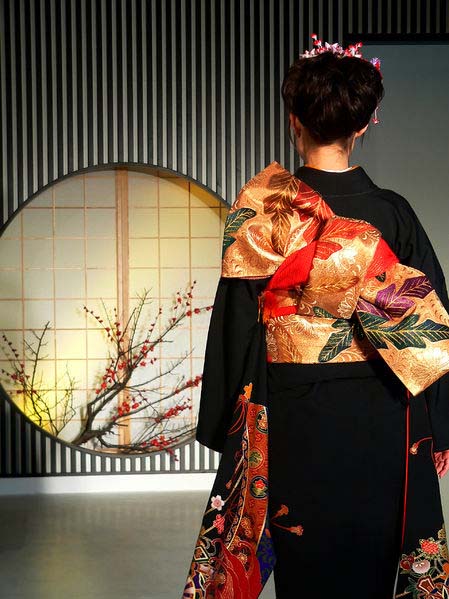
In Japan, kimonos are associated with manners and can symbolize formality. Dressing for the occasion shows respect and thanks. Status, formality, and prestige can be communicated through the kimono’s design, styling, color, and belt knotting.
For some, it’s a way to dress up and reconnect with history. For others, it’s a chance to wear something beautiful and feminine instead of a luxury outfit. Many current admirers have never visited Japan but wear kimonos for special occasions.
In Japan, the rise in kimono rental stores implies more individuals want to rediscover this traditional apparel. With modern designers putting a fresh spin on classic shapes and patterns, kimono’s new followers are sure the garment may still have a place in our everyday wardrobe.
>>> Read more: 15+ Best Japanese Clothing Brands Popular You Should Know
VI. How To Buy Kimono Online?
While online shopping is gaining popularity nowadays, many new and used kimono purchases can be bought online if you can not go to visit brick-and-mortar stores in Japan. Here, we list out the 3 most preferred shopping places when buying Kimono
6.1. Rakuten

Rakuten is the most comprehensive e-commerce site in Japan
Rakuten is the most comprehensive e-commerce site in Japan, such as Japanese cosmetics, electronics, home appliances,… and of course, kimono. When purchasing a kimono, it’s important to keep in mind whether the store also sells a combination of clothing and accessories.
While some Rakuten sellers have well-established businesses and large marketing budgets, others are just small retailers who want to make a little extra money by selling things they no longer need. Therefore, the kimono sold by Rakuten can be diverse in types, and you don’t have to worry about going to other places to buy other items.
The products sold by Rakuten are both reasonably priced and of exceptionally high quality. The international version of the site includes all the resellers who are willing to ship worldwide. If the goods you’re looking for don’t have a suitable alternative or local sellers, this version of Rakuten is still a viable option.
6.2. Amazon Japan

Purchase nearly anything from Amazon Japan
Amazon has a substantial presence in Japan as well, owing to its dominance over the online purchasing market in the United States. Amazon Japan, on the other hand, has a distinct regional flavor and functions in a manner similar to that of Rakuten. Many of the products available on Amazon Japan can only be purchased in Japan.
Not every seller on Amazon Japan ships abroad, but you’d be astonished at what’s available. Toggle the “International shipping” filter before starting your search if you’re looking for something from Japan.
Amazon has a substantial presence in Japan as well, owing to its dominance over the online purchasing market in the United States. Amazon Japan, on the other hand, has a distinct regional flavor and functions like that of Rakuten. Many of the products available on Amazon Japan can only be purchased in Japan.
Not every seller on Amazon Japan ships abroad, but you’d be astonished at what’s available. Toggle the “International shipping” filter before starting your search if you’re looking for something from Japan.
>>> Read more: Amazon Online Purchase | Buy from Amazon Japan
6.3. Online flea market and retailer
When it comes to kimonos, Rakuten’s Kimono page offers a one-stop shop for a wide variety of options from a wide variety of Japanese businesses. Additionally, it provides you with a concise and useful breakdown of the various kinds of kimonos and accessories that are on the market today. Rakuten sells kimonos starting at around 9,000 yen.
Online flea market Ichiroya sells authentic, family-owned kimonos from Kyoto, Nara, and Kobe that range in age from vintage to virtually new and even include semi-custom-made designs. Although they sell kimonos for as little as $3,000 and as much as $200,000, the majority of those I’ve seen are in the low to mid-hundreds of dollars (USD). They also have a helpful YouTube channel where they post brief tutorials on anything from kimono shopping to kimono wearing.
In this article, we’ve covered everything you need to know about the various types of Japanese kimonos. Customers who order Japanese products face a wide range of difficulties, from the difficulty of finding the right item, to language and currency issues, to the frustration of having to wait for the package to arrive. So that’s the reason we’re here.
The goal of Janbox is to make it easier for customers to buy products from Japan. With our intelligent proxy service, we’ll help you to reduce anxiety, worry, and shorten the time it takes to purchase a given product! With just a few simple steps, you can order high-quality items from Japan and have them delivered to your home quickly and safely.
Read more: How to buy Snidel Clothing in Japan?
Website: https://janbox.com
Email: [email protected]

